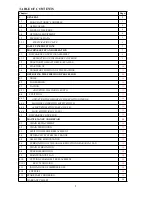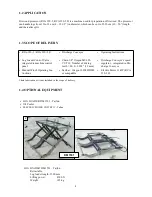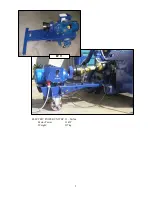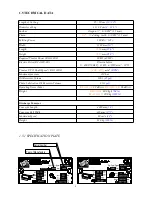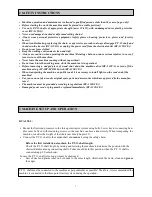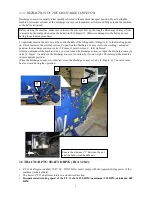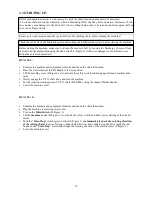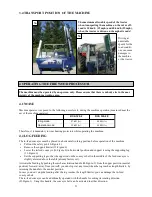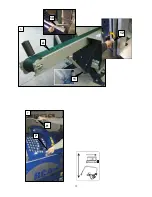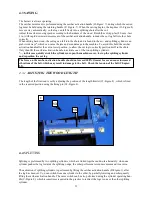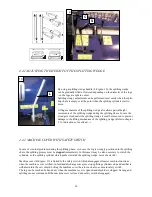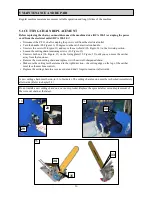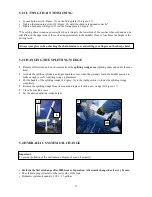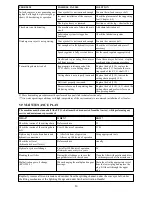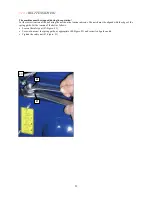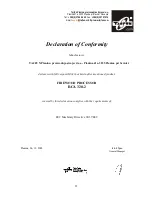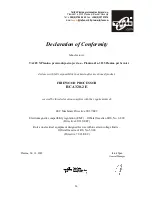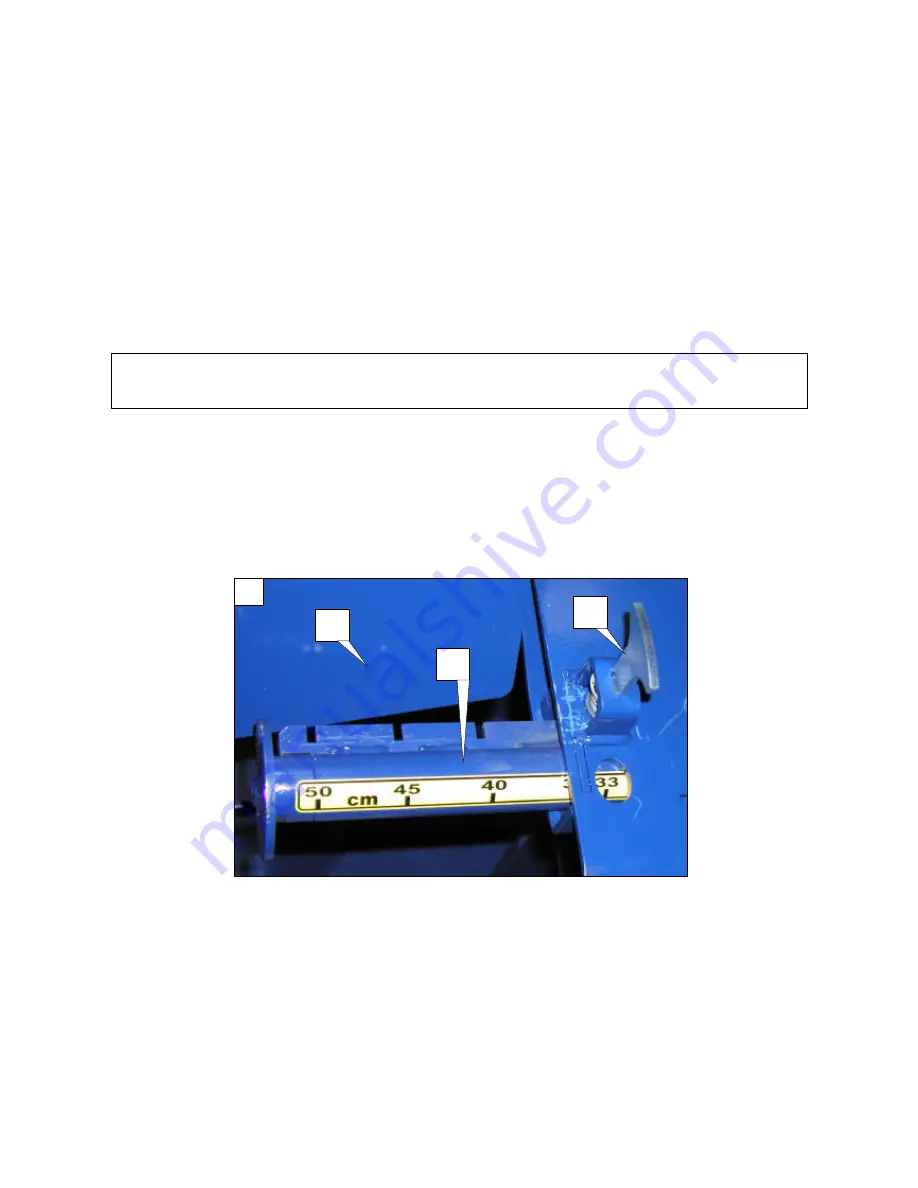
13
4.3 SAWING
The barsaw is always operating.
The sawbar movement is performed using the sawbar activation handle (H-Figure: 7), during which the sawed
log must be held using the retaining handle (P- Figure: 7). When the sawing begins, the trapdoor (13-Figure:8)
moves away automatically, so the log can fall freely into a splitting chute after the cut.
Adjust the sawbar moving speed according to the hardness of the wood. Finish the cut (app. last 20 mm - last
1 in ) with rapid downward movement of the sawbar activation handle, to make the cut log fall into the chute
correctly.
When cutting hard wood, the cut log can fall into the chute and rebound in the air - and splitting cylinder can
grab it sideways*, which can cause the jam and even damage to the machine. To avoid this, hold the sawbar
activation handle after the cut in lower position, to allow the cut log to correctly position itself in the chute.
Only then lift the sawbar activation handle to activate one of the two splitting cylinders.
*
… in this case quickly switch the cylinders or open the machine cover, to stop the splitting cylinder
and reposition the cut log.
4.3.1
ADJUSTING THE WOOD LENGTH
The length of the firewood is set by adjusting the position of the length limiter (15-Figure:8) , which is fixed
in the required position using the fixing pin (14-Figure:8).
4.4
SPLITTING
Splitting is preformed by two splitting cylinders, which are linked together and work alternately: when one
cylinder pushes the log towards the splitting wedge, the other performs a return movement and vice versa.
The activation of splitting cylinders is performed by lifting the sawbar activation handle (H-Figure:1), after
the log has been cut. You can switch from one cylinder to the other, by partially lowering and subsequently
lifting the sawbar activation handle. The same switch can be also performed using the cylinder operating han-
dle (C-Figure:9), which is sometimes required in the practice to redirect the logs to one or the other splitting
cylinder.
The force on the sawbar activation handle should not exceed 100N. Greater force can cause increased
vibrations of the belt, which may result in damage to the belt. Check the tension of the belt (Chapter:
5.9).
8
15
14
13


